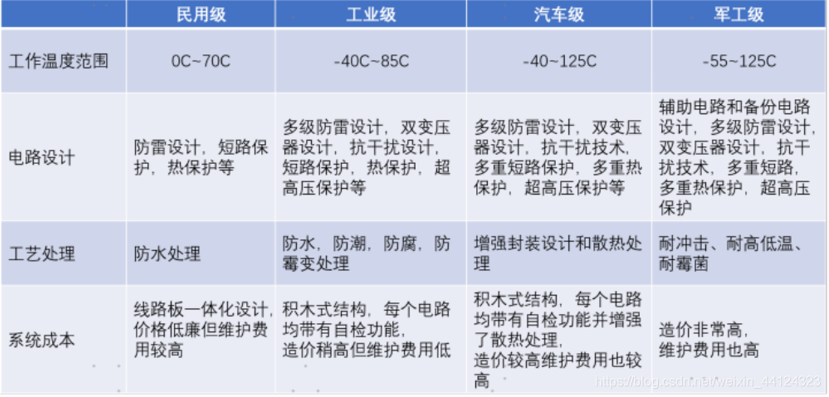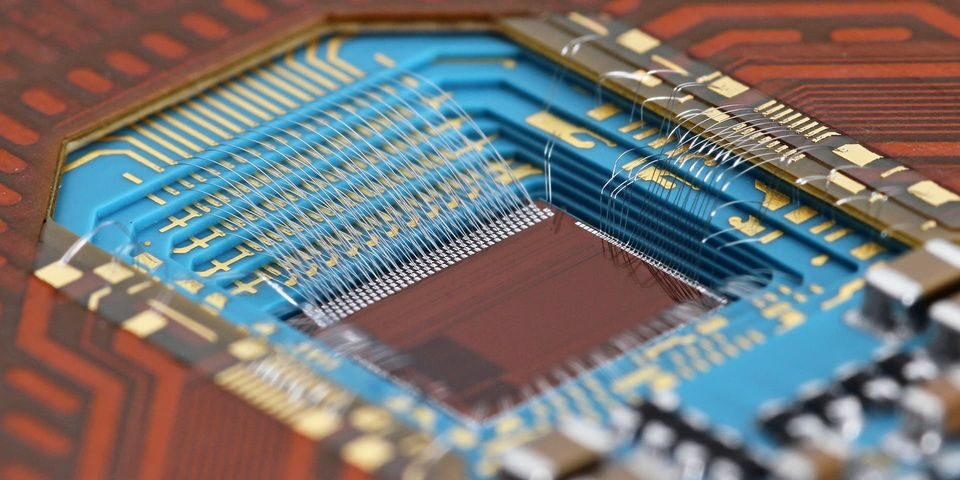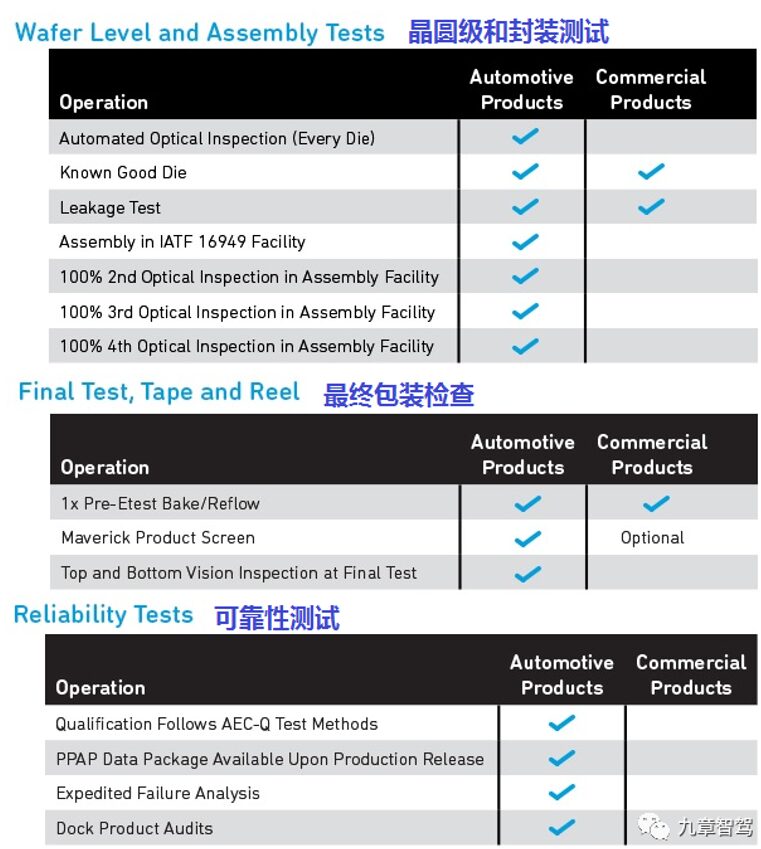
Source: Eefocus
Original Author: Liu Haoran
Editor’s Note
✦
Chips with higher grade specifications can withstand a wider temperature range, and correspondingly, the difficulty of chip manufacturing increases. Among various chips, why can only a portion achieve military-grade standards?
✦
✦
As the core of all electronic products, chips have become an indispensable part of our daily lives. From watches and fitness bands to rockets and satellites, chips are everywhere. However, the working environments of different types of chips vary significantly. For instance, ordinary consumer-grade chips operate only under normal temperature conditions, and even if they lag, the impact is minimal; chips used in factories may need to endure harsher environments such as high humidity, vibration, and dust; chips in vehicles must ensure long-term stability, as high-speed cars require absolutely reliable chips for safe operation; while chips in aerospace vehicles not only need to withstand some of the most extreme environments on Earth but also constantly face the threat of cosmic radiation.
The classification of chips is essentially a division based on the severity of their application environments. Commonly, chips are divided into four categories: civilian grade (consumer grade), industrial grade, automotive grade, and military grade (aerospace grade). Currently, the highest specification chip that we can access is the automotive-grade chip. Compared to consumer-grade chips, automotive-grade chips can endure more extreme temperatures and usage environments.
If military-grade and automotive-grade chips are so impressive, why not make all chips conform to high-grade standards?
The classification of chips is not that simple; it involves the entire process from circuit design and manufacturing to the final packaging and selection of chips. High-spec chips may not necessarily be suitable for other grade environments. First, higher-spec chips often mean higher prices, and paying for non-existent application scenarios can reduce the cost-effectiveness of chips. Moreover, higher chip grades do not always equate to faster processing speeds; sometimes, chips sacrifice some performance to avoid crashing in special application scenarios.

Requirements for Different Grade Chips
Image Source | CSDN
According to the chart above, we can see the differences among these chip categories. Simply put, chips with higher grade specifications can withstand a wider temperature range, and correspondingly, the difficulty of chip manufacturing increases. Among various chips, why can only a portion achieve military-grade standards?
Redundant Design of Chips
The risk level of a situation is often explained by its fault tolerance rate. In the chip manufacturing process, fault tolerance is typically achieved through redundancy design.
Redundancy design, in simple terms, is increasing resource investment to enhance the reliability of chips.
Having redundant circuits in a chip is not wasteful, as chips need to be well-prepared for unknown tasks to reduce the likelihood of crashing under special circumstances. Chip design experts explain redundant circuits this way: “We can customize the system to have enough buffering between the processor and memory, so that even when memory is maximally loaded, and the transaction flow between the processor and memory has maximum delay, the processor can cover many transaction issues.” A certain amount of redundant cache can prevent crashes when processing large-scale parallel tasks even when memory overflows. Additionally, applying redundancy design to memory can achieve the same effect.
Of course, designing redundant circuits is not as simple as copy-pasting. For example, chip manufacturers can add capacity margins in certain processing flows, such as the aforementioned redundant memory and cache, which can allow the chip to handle buffering timing issues and potential changes timely; redundancy can also involve selecting more mature IP cores, which, while not necessarily the fastest in computation speed, can maximize reliability; redundancy can also lead processors to adopt stable strategies rather than efficiency strategies when computing certain algorithms, minimizing the risks of computation errors.
In summary, redundancy is not superfluous. Engineers in the autonomous driving field have pointed out: “Many aspects of design are based on rules of thumb. They may require reserving 30% margin to provide timing buffers. This can address exceptional situations encountered in physical design. This margin is by no means wasteful; it is more like insurance against critical issues in physical design or process.”
Special Packaging Enhances Chip Reliability

Image Source | microhybrid.com
On February 9 this year, SpaceX announced that 40 out of 49 Starlink satellites launched on February 3 were affected by a geomagnetic storm and have already fallen or will fall into the atmosphere. SpaceX stated that the satellites were impacted by the magnetic storm after launch, resulting in increased atmospheric density at the launch site, leading to increased resistance for the satellites, causing some to go off course.
In fact, the threats faced by chips in satellites, rockets, and other aerospace vehicles go far beyond this. Without the protection of the atmosphere, geomagnetic storms, solar wind, cosmic rays, and more will affect the normal functioning of chips. Moreover, no matter how much effort is made in the early design phase, these threats cannot be completely mitigated. This is when special protection for chips is needed to isolate them from external environments.
A piece of single crystal silicon undergoes several processes including design, manufacturing, packaging, and testing before it becomes the chip we use. One of the purposes of packaging is to protect the fragile chip inside from external environmental influences.
Taking aerospace-grade chips as an example, ordinary consumer-grade chips can achieve sufficient protection with plastic packaging, while aerospace-grade chips often use ceramic or metal packaging, and the outer surface is often plated with a layer of brass to isolate cosmic rays and high-temperature environments. To reduce secondary effects caused by radiation, special gases are often filled during packaging.
Currently, automotive-grade chips are the highest specifications visible to consumers. From automotive-grade requirements, the working temperature must reach -40℃ to 125℃, and they also need to possess anti-lightning, anti-humidity, and anti-vibration capabilities. Therefore, automotive-grade chips often need to consider heat dissipation and sealing issues during packaging. Currently, many automotive chips adopt SIP packaging, integrating most modules that require high computational stability into a unified protective package, while also reducing the distance between different modules for communication, thus minimizing the potential impact on data transmission.
Strict Review Mechanism
In fact, regardless of whether they are industrial-grade, automotive-grade, or military/aerospace-grade chips, after multiple rounds of preparation, they must undergo strict selection and testing. Chips of various grades are not self-certified by chip manufacturers; they must be approved by relevant domestic departments to determine their grade.
 Multiple rounds of testing for automotive-grade chips
Multiple rounds of testing for automotive-grade chips
Image Source | Jiuzhang Zhijia
In recent years, the electric vehicle sector has grown rapidly, and autonomous driving technology is gradually becoming mainstream, leading to an increasing demand for automotive chips. Taking the frequently discussed automotive-grade chips as an example, compared to ordinary consumer-grade chips, they require multiple rounds of requirements management, safety-critical design, functional failure simulation, review and reporting, and third-party evaluation for safety certification. According to the new IOS 26262-2018 standard, functional safety refers to the absence of unreasonable risks caused by electrical and electronic system failures. All automotive products, including IP, must meet the functional safety requirements defined by this new standard. The main verification for functional safety reliability is AEC validation.
AEC stands for Automotive Electronics Council, a standardization body established in 1993 by three major US companies: Chrysler, Ford, and General Motors, aimed at establishing universal standards for reliable, high-quality electronic components. AEC members are divided into two types: permanent members, usually vehicle companies, and technical members, generally chip companies. AEC provides a testing platform; chips must pass through the AEC-Q series testing phases after wafer fabrication to achieve automotive-grade validation. Therefore, AEC-Q testing is also referred to as the “basic threshold” for chips before they are installed in vehicles.
With testing comes results; after testing, the overall pass rate for the batch of chips is determined, which is the yield. Yield determines the final grading range of the chips. According to the DPPM (Defect Parts Per Million) standard, consumer chips should have less than 500 defects, while automotive-grade chips should have 0-10 defects. Industrial-grade chips fall between the two, with specific requirements adjusted based on customer needs.
Conclusion
Currently, chips are roughly divided into four grades: consumer grade, industrial grade, automotive grade, and military (aerospace) grade. Chips of different grades and specifications have different requirements from design to packaging and testing stages, and their usage scenarios also vary significantly. Overall, the higher the specifications of the chip, the more redundancy design it has, the more tightly sealed it is, and the more complex and stringent the testing process becomes.
– END –
Reprinted content only represents the author’s views
Does not represent the position of the Institute of Semiconductors, Chinese Academy of Sciences
Editor: Qian Niao
